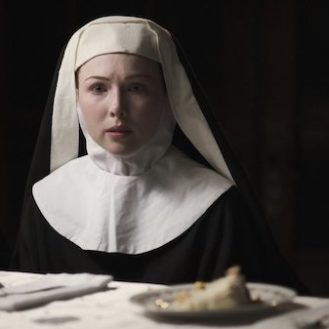Tom Hooper wowed audiences with The King’s Speech. Well, most audiences – I thought it was inspirational but ordinary, with stylistic cinematography that overshadowed many elements of the story. Nonetheless, his film won multiple Oscars; including Best Picture.
He may follow suit with his adaptation of Les Misérables; in both the award garnering sense and the cinematography sense.
Hooper has brought his shooting style to his latest feature following Jean Valjean (played by Hugh Jackman) as he flees from perturbed policeman Javert (played by Russell Crowe) while keeping a close eye over young Cosette (played by the adorable Isabelle Allen and then by doe eyed Amanda Seyfried) who is the daughter of a tragic factory worker named Fantine (played by Anne Hathaway).
The case with Les Misérables is that the style does not trump the story. In fact, it keeps itself far away from sabotaging the dynamic and heavily emotional story – which has been flawlessly adapted by screenwriter William Nicholson.
Hooper allows cinematographer Danny Cohen to get up-close-and-personal with his actors. Occasionally – and I stress occasionally – we see a shadow as the camera gets too close, but the relentless intimacy adds a personal connection that the stage play provides in an alternate way.
When patrons see Les Misérables being acted out on stage, the real-time performance allows for those viewers to grow attached to the actor on stage. It’s obvious Hooper wants to capture that same personal connection with his medium. I think he’s gone above and beyond with his ability to build a relationship between his actors and the moviegoing public.
The performing cast all do a fantastic job. From the sensational and dedicated lead performances by Jackman and Crowe to the sweeping and emotional background ensemble to the emotion-shattering supporting performance from Hathaway – who may as well start clearing her throat now for her Oscar acceptance speech.
Jackman disappears into the role of Valjean; giving his best performance of his career. We feel his morality struggle and his aging development with every frame of the film.
As for Crowe, his voice may be the most grumbly of the bunch, but that doesn’t mean he’s bad. He’s quite impressive with his melodic monologues and his gradual breakdown through the years hunting Valjean.
Sacha Baron Cohen and Helena Bonham Carter are hilarious scene stealers as Thénardier and Madame Thénardier, a mischievous couple who steal and swindle. Those two character actors are recognizable but they’re very much focused throughout their screen time. Though, I thought I heard a sprinkling of Ali G during Cohen’s quick punchlines – which was amusing rather than distracting. However, to write his performance off for that very minor quibble would be silly.
Les Misérables balances two different storytellings and visual presentations. It wants to be true to its period while also being theatrical – as it should be. The period detail starts off strong, with most of the cinematography during the first and second acts resembling war photography.
As the third act plays out, the film becomes more theatrical with its staging of fights and choreography. That’s not a problem per se, but more of an observation.
The theatrical elements are expected and embraced though. The entire project is being respectable to the subject material whilst also adding moments of classic cinema to the equation. It guarantees you perpetual goosebumps throughout it’s two-and-a-half hour duration – which flew by for me (yes, even without an intermission!).
Hooper has won me back and confirmed that he’s here to stay as a director and visionary. It’s understandable his shooting style is polarizing and is utterly subjective. For this critic, it worked wonders in Les Mis’ context; as does every other element in this magnificent cinematic event.





Great review! I’ll be sure to check it out